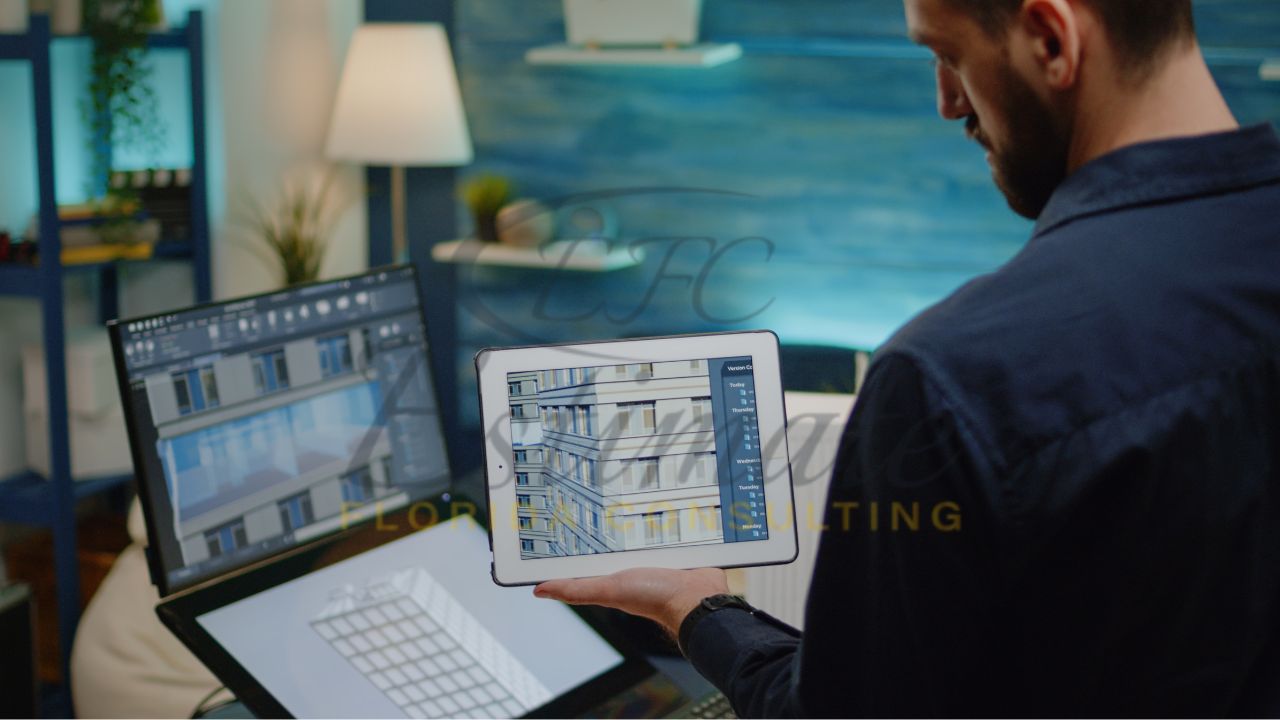- Homepage
- Building Information Modeling Services
What Is BIM?— A Complete Guide
Leading provider of bim services for your project
Building Information Modeling, commonly known as BIM, has completely transformed the construction industry. From design and planning to project execution and facility management, BIM is reshaping how buildings are conceived, constructed, and maintained. For professionals like general contractors, subcontractors, architects, engineers, and developers, understanding BIM is no longer optional — it’s a necessity.
In this detailed guide, we’ll explore what BIM is, how it works, its core benefits, its applications in modern construction, and why it plays a crucial role in cost estimation and project coordination.

Understanding the Meaning of BIM
At its core, Building Information Modeling (BIM) is a digital representation of the physical and functional characteristics of a building or infrastructure. It’s not just a 3D model — it’s a comprehensive process that combines geometry, data, and intelligent information into one collaborative platform.
Unlike traditional 2D drawings or CAD systems, BIM integrates every phase of the construction lifecycle — from the initial concept and design to construction, maintenance, and even demolition. It allows all project stakeholders, including architects, engineers, estimators, and owners, to work together using the same digital model, reducing misunderstandings and improving project outcomes.
In simple terms, BIM creates a shared source of truth for everyone involved in a construction project, ensuring that every detail — whether it’s structural, mechanical, or architectural — is coordinated and accurate.
The Evolution of BIM in the Construction Industry
The concept of BIM didn’t appear overnight. It evolved gradually from traditional drafting methods to today’s advanced information-rich 3D modeling. In the early days, architects relied heavily on manual blueprints and paper drawings. As technology advanced, CAD (Computer-Aided Design) revolutionized drafting, allowing digital 2D drawings.
However, CAD was still limited — it couldn’t connect design with data or link different project disciplines together. That’s where BIM made its breakthrough. Introduced in the 2000s, BIM was designed to go beyond geometry, embedding real-world data like materials, dimensions, costs, and performance information into digital models.
Today, BIM is not just a tool — it’s a process-driven approach that promotes collaboration, coordination, and clarity. In Florida and across the U.S., construction projects ranging from commercial high-rises to residential developments are using BIM to improve productivity, reduce waste, and eliminate costly rework.
How Does BIM Work?
BIM works by creating a centralized 3D model that contains all the information about a building — including geometry, spatial relationships, material properties, structural loads, mechanical systems, and more. Every component of the building — from beams and columns to pipes and electrical wiring — is represented in the model.
As project stakeholders add information, BIM automatically updates the entire system. This means if an architect adjusts a wall’s position, the change automatically affects related elements like doors, floors, and even the HVAC layout. This intelligent updating process prevents errors that typically occur in manual coordination.
Additionally, BIM allows for 4D, 5D, and even 7D modeling, meaning it integrates time, cost, and operational data into the model:
- 3D BIM: The visual model — geometry and spatial layout.
- 4D BIM: Adds time and scheduling data for project sequencing.
- 5D BIM: Integrates cost estimation and budgeting into the model.
- 6D BIM: Focuses on sustainability and energy efficiency.
- 7D BIM: Extends to facility management and maintenance after construction.
This multi-dimensional data-driven approach ensures that project planning, execution, and lifecycle management are connected seamlessly.

Core Components of BIM
BIM isn’t just software — it’s a structured process with several integrated components that work together to enhance accuracy and efficiency. The major components include:
- 3D Modeling and Visualization
BIM creates an intelligent 3D model that helps designers and builders visualize the project before construction begins. This allows for better decision-making, design improvements, and clash detection. - Data Integration
Every object in the BIM model contains detailed data — materials, dimensions, manufacturer details, and performance specs — creating a highly informative digital environment. - Collaboration and Coordination
BIM serves as a shared digital workspace where all project stakeholders can view, modify, and collaborate in real time. This minimizes errors, reduces rework, and ensures everyone stays aligned. - Lifecycle Management
BIM doesn’t stop once construction is completed. The model continues to serve as a digital twin for the building, helping facility managers monitor performance, schedule maintenance, and manage assets efficiently.
Benefits of BIM in Construction
The adoption of BIM offers numerous benefits across all stages of construction. Below are the most significant advantages that make BIM an industry standard today:
Get High-Quality 3D Rendering Today!
Transform your space with stunning 3d rendering that blends style, comfort, and functionality.
We specialize in providing 3D rendering services.
- Luxury Villas
- Apartment Complexes
- Modular Kitchens
- Bathrooms
- Office Buildings
- Shopping Malls
- Hospitals
- Hotels & Resorts
1. Enhanced Collaboration and Communication
BIM centralizes all project data into one shared model. This means architects, engineers, estimators, and contractors can access the same information simultaneously.
It eliminates miscommunication, reduces data duplication, and ensures smooth workflow between teams.
2. Improved Design Accuracy and Clash Detection
One of the biggest challenges in traditional construction was coordination between disciplines. BIM automatically detects design conflicts — such as a plumbing pipe intersecting with a duct — before construction begins. This saves time and prevents costly on-site rework.
3. Cost and Time Efficiency
Through 5D modeling, BIM integrates cost data directly into the design process. This allows estimators to generate accurate quantity takeoffs, adjust budgets instantly when design changes occur, and forecast costs with precision. Additionally, 4D modeling helps schedule construction activities more effectively, reducing project delays.
4. Better Project Visualization
BIM enables realistic 3D visualizations that allow clients and stakeholders to see how the finished project will look before construction starts. This makes it easier to make design decisions and communicate ideas clearly.
5. Sustainability and Energy Efficiency
With 6D BIM, project teams can simulate energy performance, lighting conditions, and material sustainability. This helps in designing greener buildings that comply with Florida’s energy codes and reduce long-term operational costs.
6. Streamlined Facility Management
Even after construction, the BIM model continues to provide value. Facility managers can use the digital model to track maintenance schedules, monitor equipment, and plan renovations efficiently — creating a true digital twin of the building.

Applications of BIM in the Florida Construction Industry
In Florida’s fast-growing construction sector, BIM has become essential for delivering projects with accuracy, efficiency, and accountability. Contractors and developers across Miami, Orlando, Tampa, and Jacksonville use BIM for a range of applications, including:
- Commercial Building Projects: Office towers, hotels, and retail complexes use BIM for design coordination and cost estimation.
- Residential Developments: Apartment buildings, condominiums, and prefab houses benefit from BIM for space optimization and energy modeling.
- Infrastructure Projects: Bridges, roads, and airports in Florida use BIM to streamline planning and maintenance.
- Renovations and Retrofits: BIM models existing structures for renovation, ensuring accurate documentation and reduced risks.
By incorporating BIM into every stage of the construction process, Estimate Florida Consulting helps clients make data-driven decisions, minimize waste, and deliver projects on time and within budget.
BIM and Construction Estimating
One of the most powerful uses of BIM is in cost estimation. Traditional estimating methods rely heavily on manual takeoffs, which can be time-consuming and prone to human error. With 5D BIM, estimators can automatically generate quantities, costs, and material lists directly from the model.
This not only saves time but also ensures unmatched accuracy. Any change in the model automatically updates the corresponding cost data, meaning estimators can provide real-time pricing updates as designs evolve. This is especially beneficial for complex projects where budgets must stay flexible yet precise.
For professional estimators in Florida, BIM has become a cornerstone tool for improving construction takeoff accuracy, reducing bid errors, and enhancing project profitability.
Want to Start Your Project with the Best Contractors?
Let’s Take Your Projects to the Next Level.
& What's you will get:
- Connecting You to Top Local Contractors
- Professional Consulting, Contractors Near You
- From Expert Advice to Local Contractor Connections
Contact Now
Let’s discuss with a cup of coffee
Challenges of Implementing BIM
While BIM offers numerous benefits, implementing it comes with its own set of challenges:
- Initial Cost and Software Investment – The software and hardware required for BIM can be expensive, especially for smaller firms.
- Training and Skill Development – BIM requires technical knowledge and specialized training to use effectively.
- Collaboration Resistance – Some professionals accustomed to traditional methods may resist adopting a new workflow.
- Data Management – BIM generates large volumes of data, requiring efficient data storage and coordination systems.
Despite these challenges, the long-term benefits — including improved efficiency, accuracy, and profitability — far outweigh the initial hurdles.
The Future of BIM in Construction
The future of BIM goes far beyond 3D modeling. With the rise of AI, cloud computing, and IoT (Internet of Things), BIM is evolving into a fully integrated ecosystem that connects real-time data from sensors, materials, and even construction equipment. This evolution is leading toward Digital Twins — virtual replicas of physical assets that continuously update with live data from the real world.
In Florida’s rapidly growing construction industry, BIM will play a pivotal role in sustainable development, smart cities, and efficient infrastructure planning. As technology advances, BIM will become the foundation of data-driven construction management and predictive maintenance.
90% More Chances to Win Bids with Our Estimate!
Conclusion
BIM is much more than a 3D design tool — it’s a comprehensive digital process that connects design, construction, and facility management into one cohesive workflow. By enhancing collaboration, improving cost accuracy, and streamlining project delivery, BIM has become an indispensable part of modern construction.
At Estimate Florida Consulting, we leverage BIM-based estimating solutions to help clients achieve precision, transparency, and efficiency in every stage of their projects. Whether it’s a commercial building, residential complex, or infrastructure project, BIM ensures smarter planning, faster execution, and higher returns on investment.
Frequently Asked Question
BIM stands for Building Information Modeling. It’s a digital process that creates and manages detailed 3D models containing physical and functional information about a building. BIM helps architects, engineers, and contractors collaborate efficiently, reduce design errors, and manage projects with greater accuracy and cost control.
Unlike traditional 2D or CAD drawings, BIM integrates both geometry and data into a single intelligent model. This means all project stakeholders can work on the same coordinated platform, where updates to one part of the design automatically reflect across all disciplines — eliminating miscommunication and reducing rework.
BIM offers multiple advantages, including:
Better collaboration and communication among project teams
Early clash detection and reduced design conflicts
Real-time cost estimation (5D BIM) and time scheduling (4D BIM)
Improved project visualization and decision-making
Enhanced sustainability and facility management after construction
Through 5D BIM modeling, estimators can automatically extract quantities and cost data directly from the 3D model. Any design change instantly updates the cost information, ensuring accurate and up-to-date budgeting. This process minimizes human errors, saves time, and enhances financial control throughout the project lifecycle.
At Estimate Florida Consulting, we specialize in BIM-integrated estimating solutions for residential, commercial, and infrastructure projects across Florida. Our experts use advanced 5D BIM technology to deliver precise cost estimates, streamline workflows, and enhance coordination between all stakeholders.
Call 561-530-2845 to discuss your BIM project needs today!
Steps to Follow
Our Simple Process to Get BIM Services
01
Share Your Project Details
Contact us with your project requirements, including sketches, blueprints, or inspiration images. Our team will analyze your vision and discuss your specific needs.
02
Get a Customized Proposal
We provide a detailed proposal with pricing, estimated timelines, and project deliverables. Once you approve the quote, we begin the rendering process.
03
3D Rendering & Revisions
Our expert designers create high-quality 3D models and refine them based on your feedback. We ensure every texture, lighting effect, and detail is perfected to match your expectations.
04
Final Delivery
Once you approve the final design, we deliver the high-resolution 3D renders, animations, or VR models in your preferred format.


